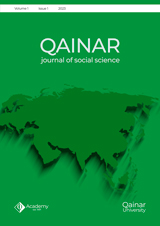
Aims and Scope
Qainar Journal of Social Science is a double-blind peer-reviewed journal that publishes original research and review articles addressing a wide range of issues in the field of humanities and social sciences. The three key areas forming the conceptual foundation of the journal "society", "human being" and "social development" are central to its vision and mission.
The target audience of the journal includes academic researchers, industry practitioners, doctoral and master’s students, and other categories of authors from Kazakhstan and abroad whose research aligns with the journal’s thematic focus.
The aim of the journal Qainar Journal of Social Science is to provide an international academic platform for publishing original and relevant studies in the fields of social and human sciences, social economy, education, social policy, and sustainable development.
Key topics covered in the journal:
- social and human sciences;
- social economy;
- demography, human resources, and labor market;
- social policy and quality of life;
- gender and social inclusion;
- cultural and communication processes in modern society;
- sustainable development and social innovations;
- governance and transformation of social institutions.
The journal publishes scientific articles in three languages – Kazakh, Russian and English, and is published four times a year. Articles are accepted for consideration in: 1st issue – until January 10, 2nd issue-April 10, 3rd issue – until July 10, 4th issue – until October 10.
Indexing:



















